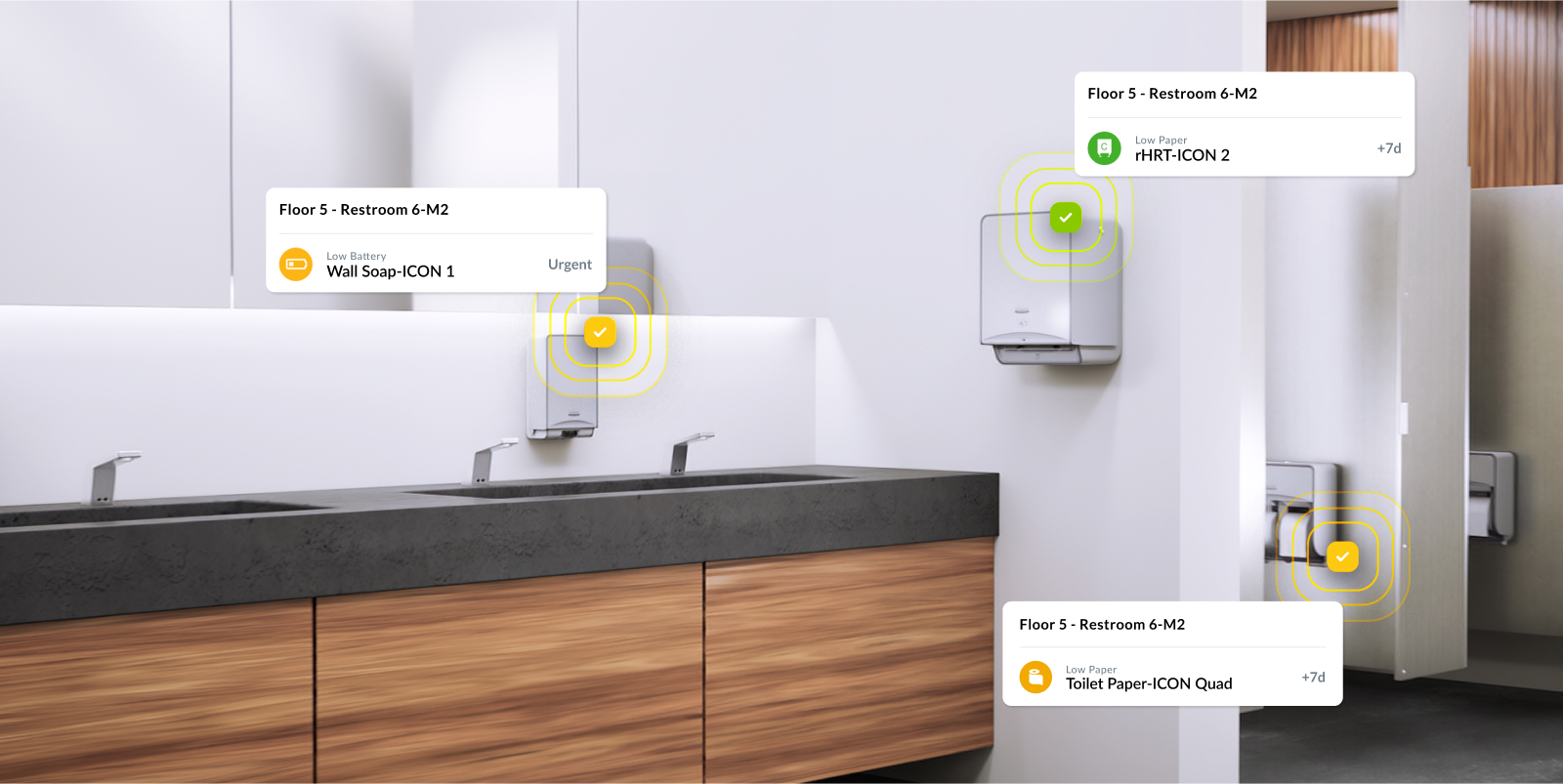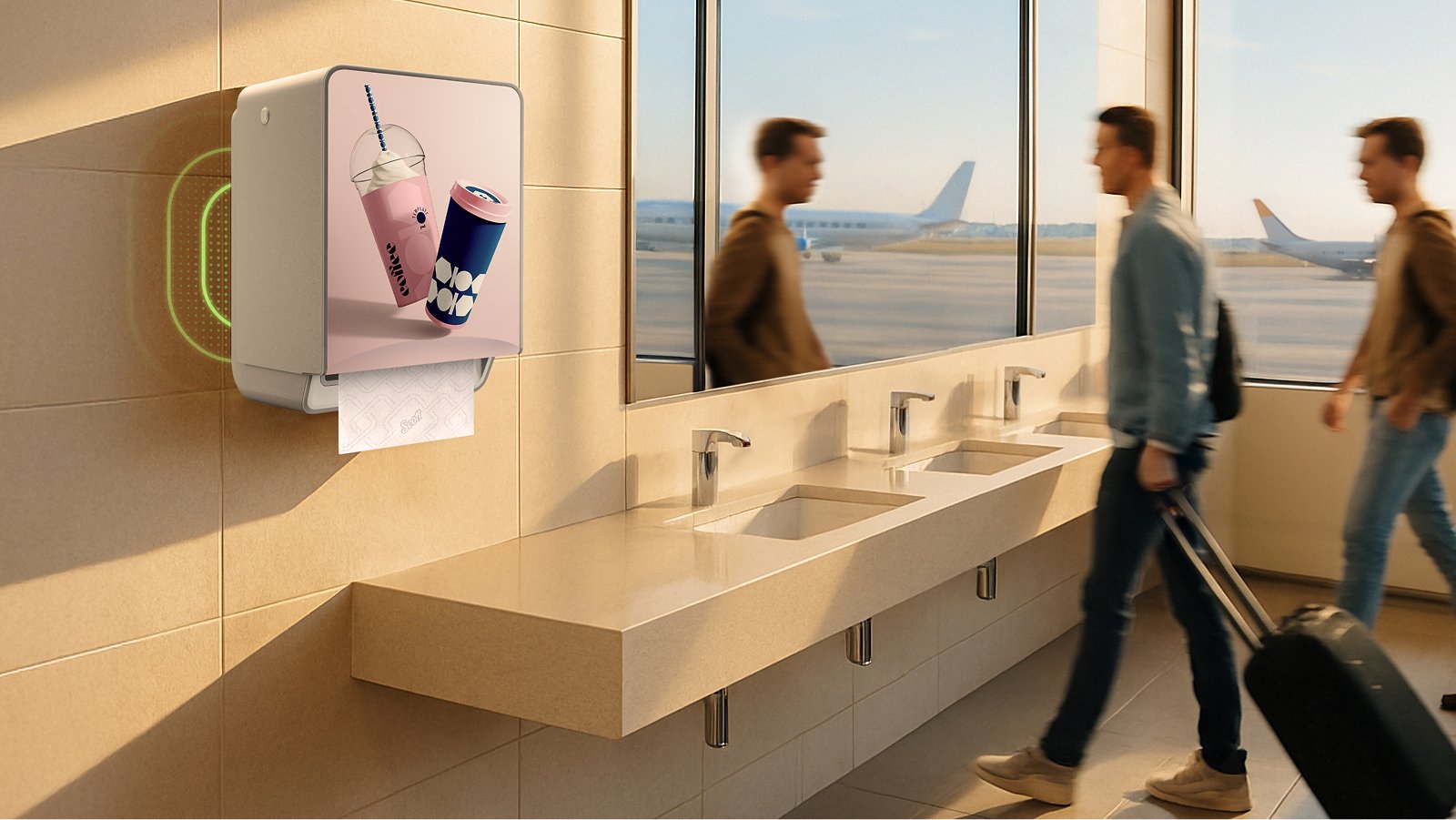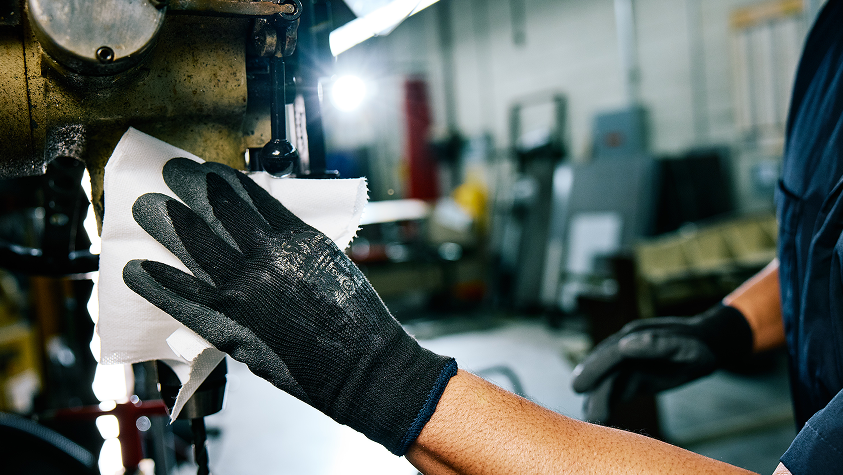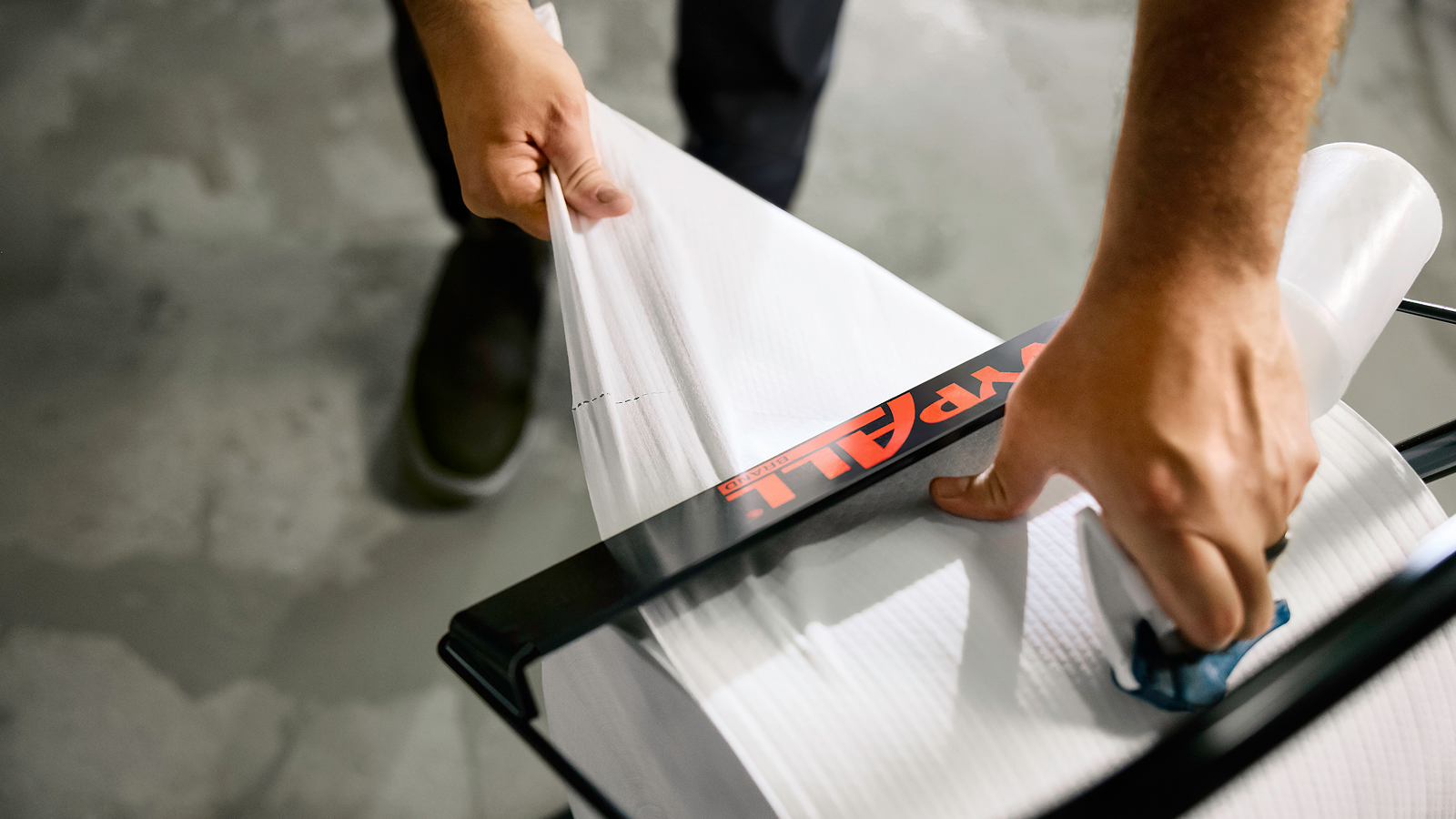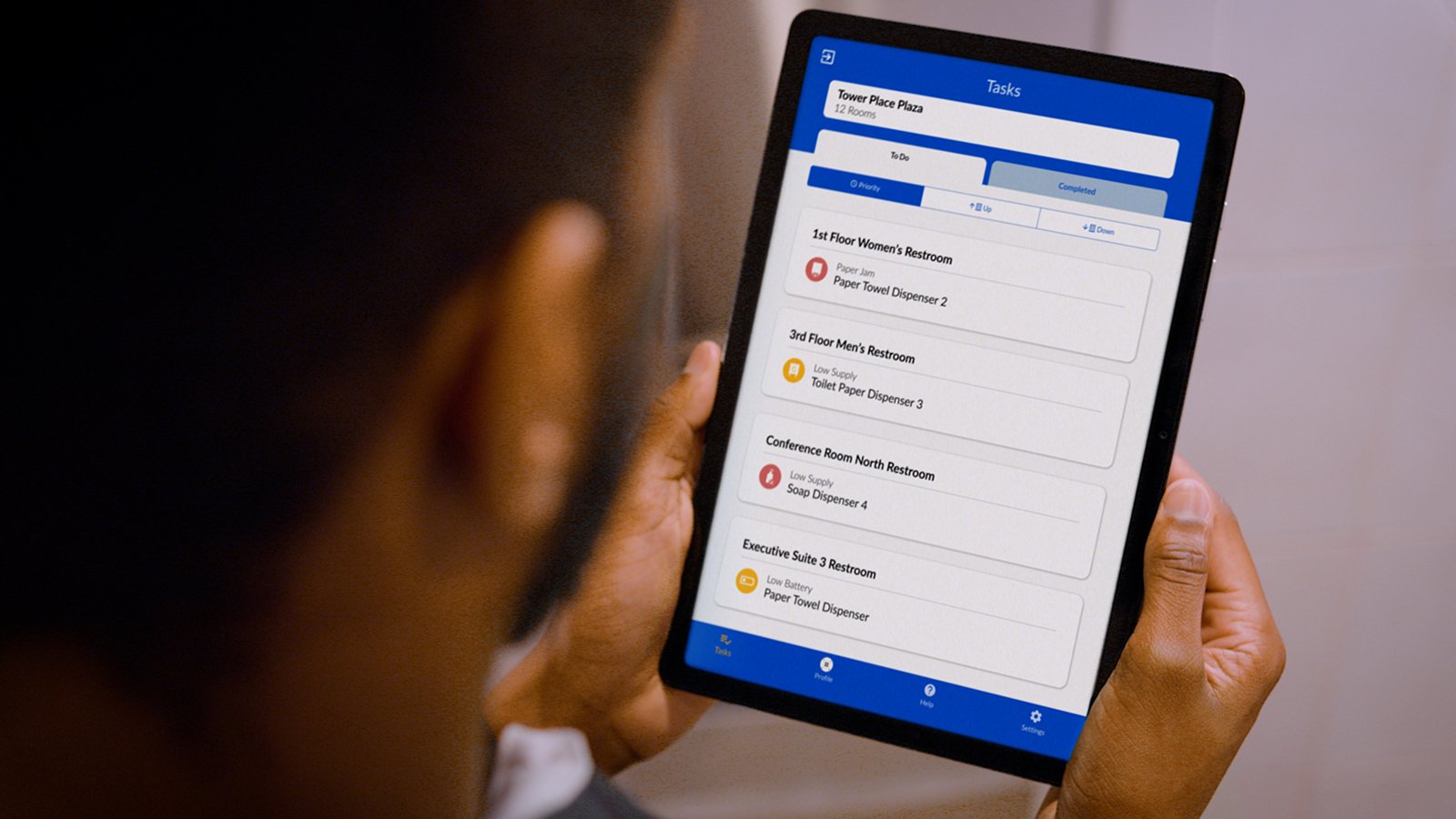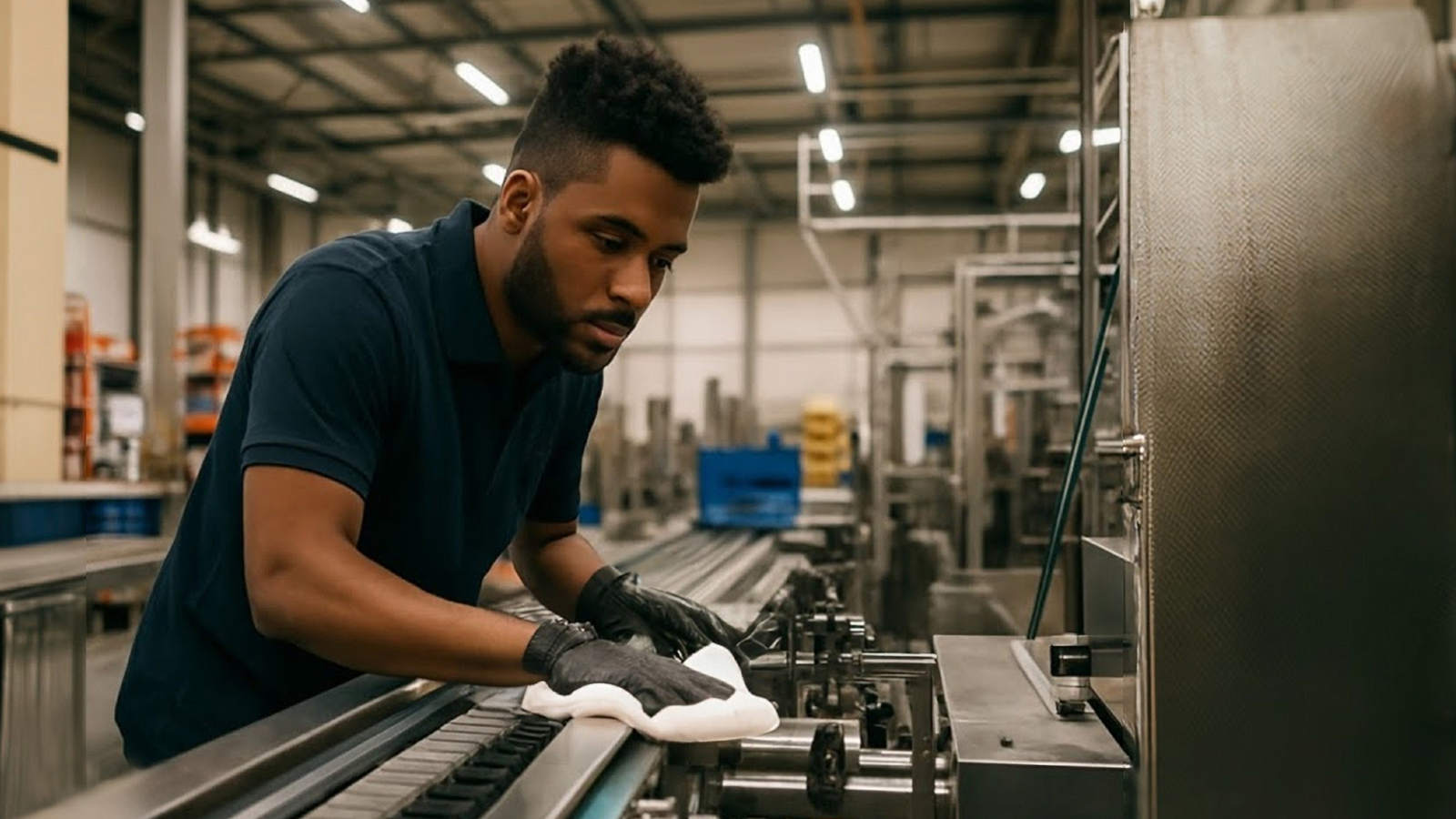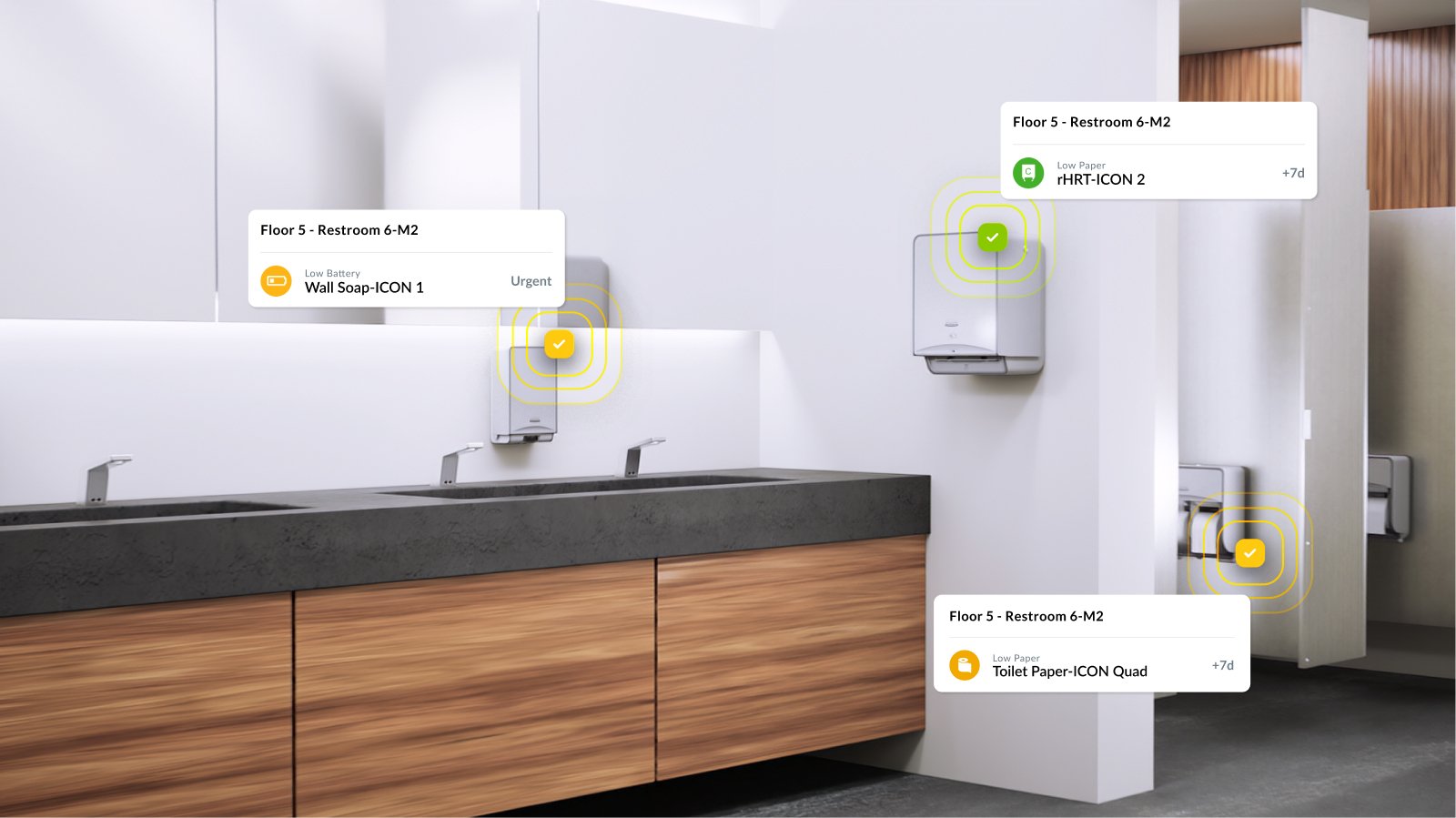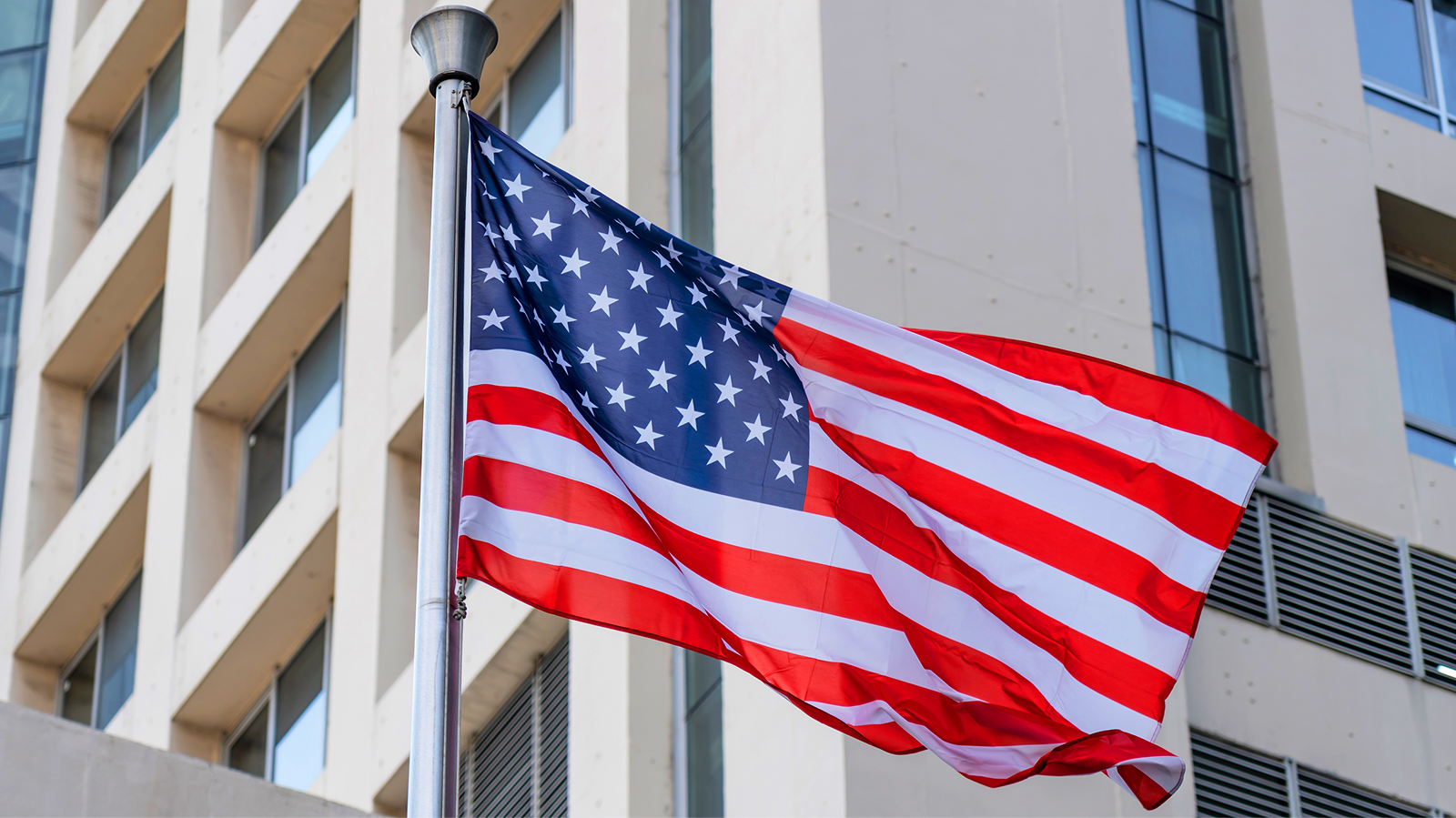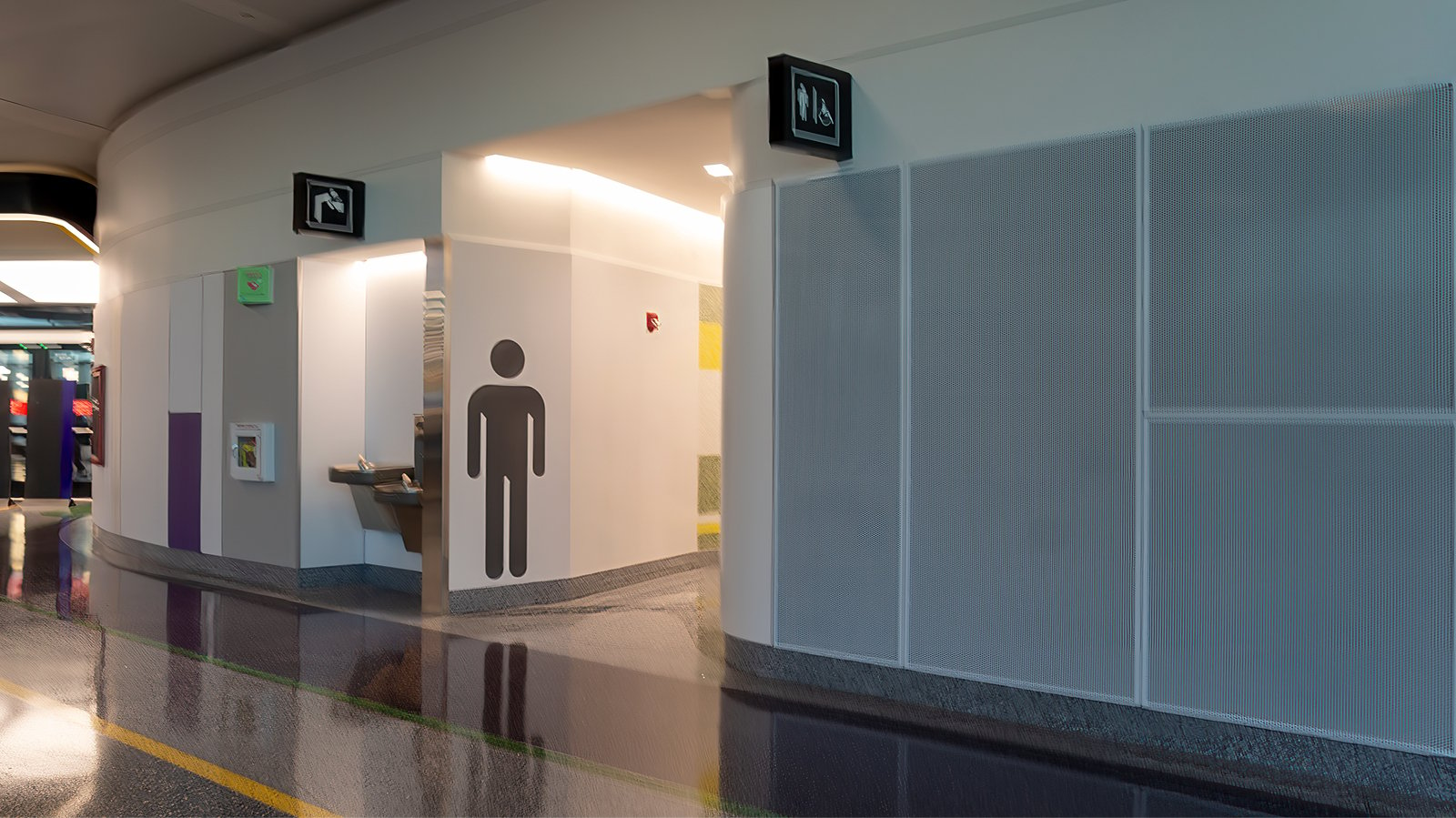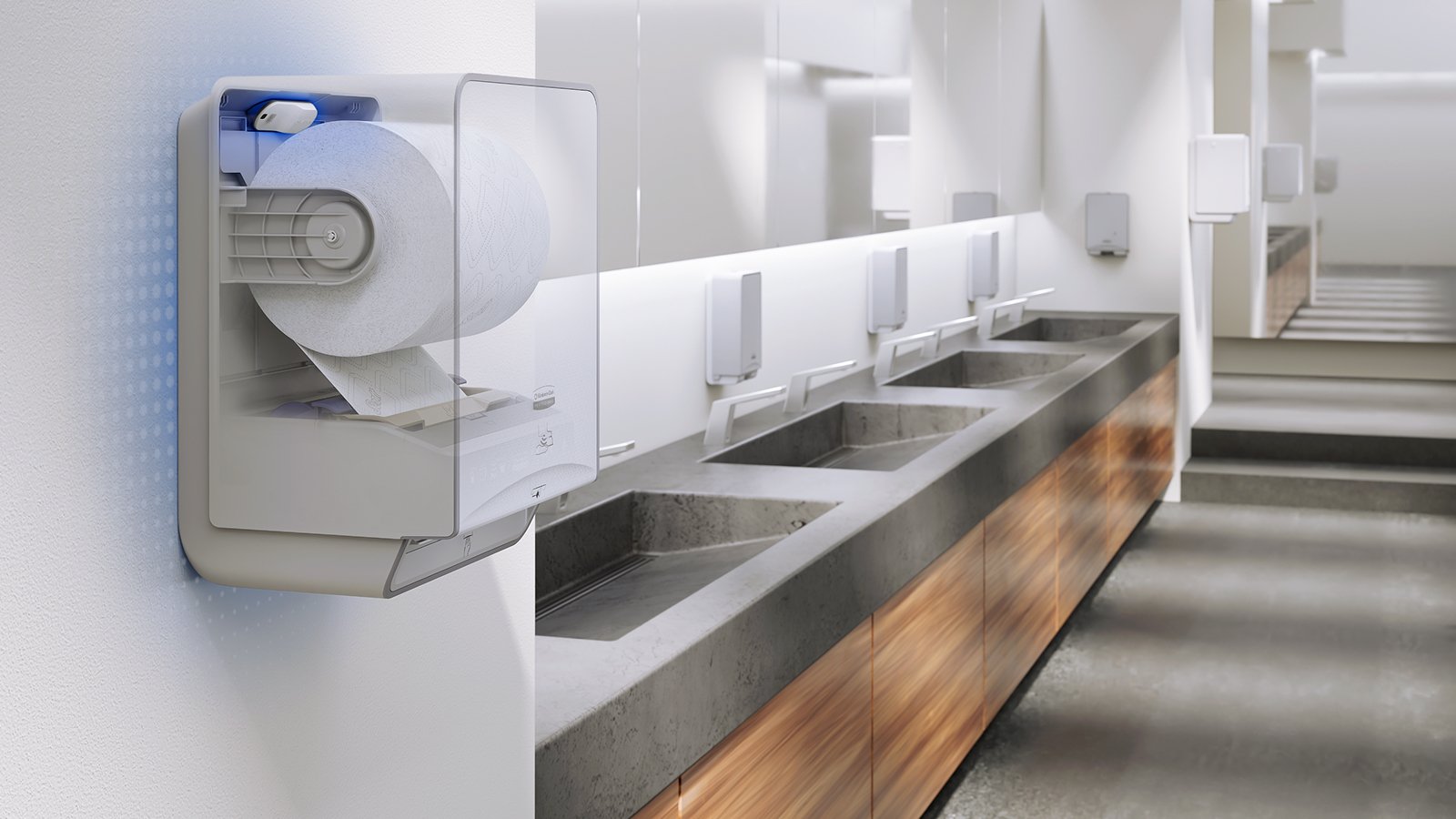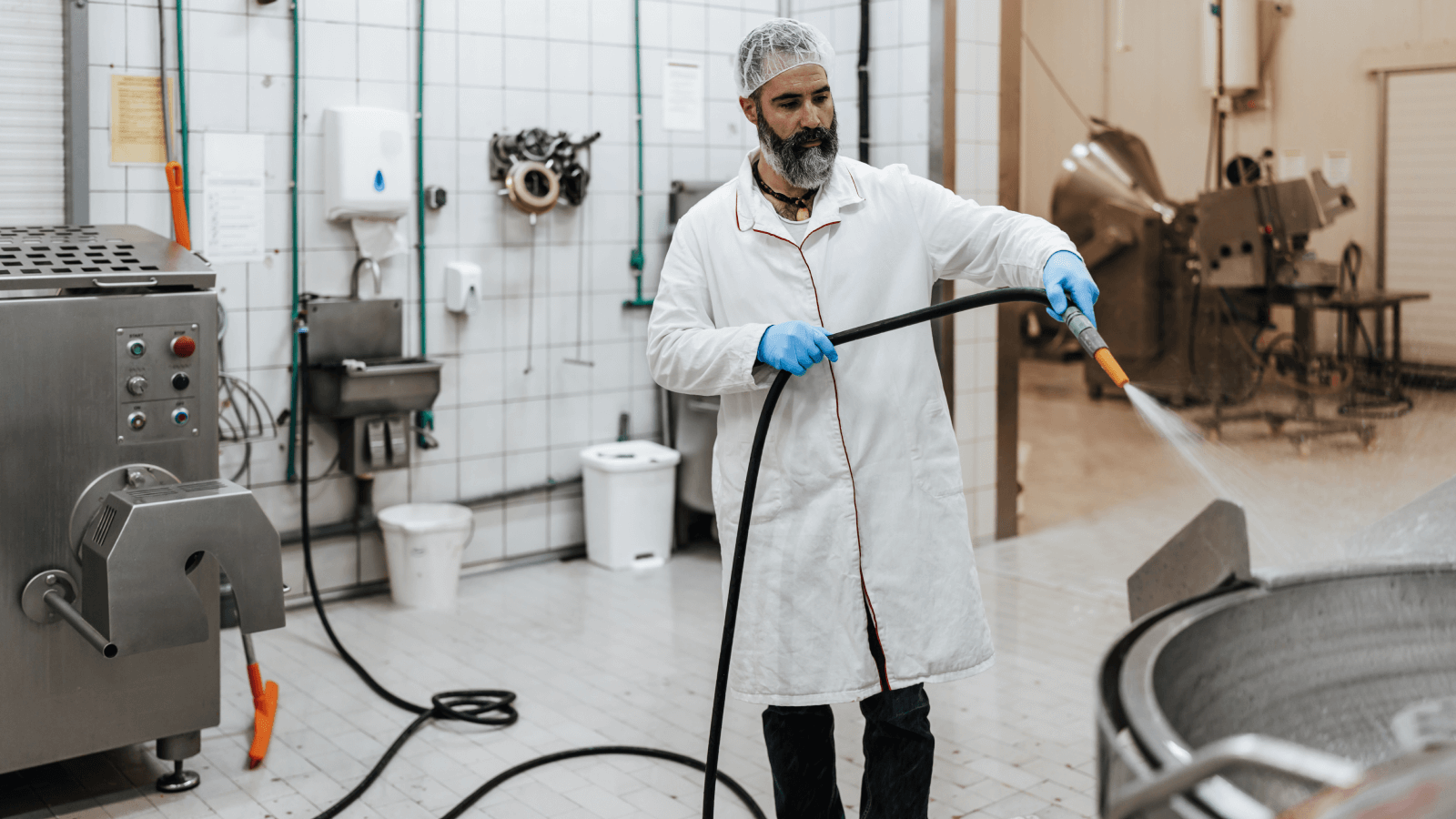Last Updated MAY 2025
Maximizing Efficiency: How Smart Restroom Technology Helps Large Grocery Retailers Reduce Costs and Improve Hygiene
With growing operational demands and shopper expectations, grocery retailers need smarter ways to manage restroom operations. See how technology can help drive cost savings, labor efficiency and a stronger in-store experience.
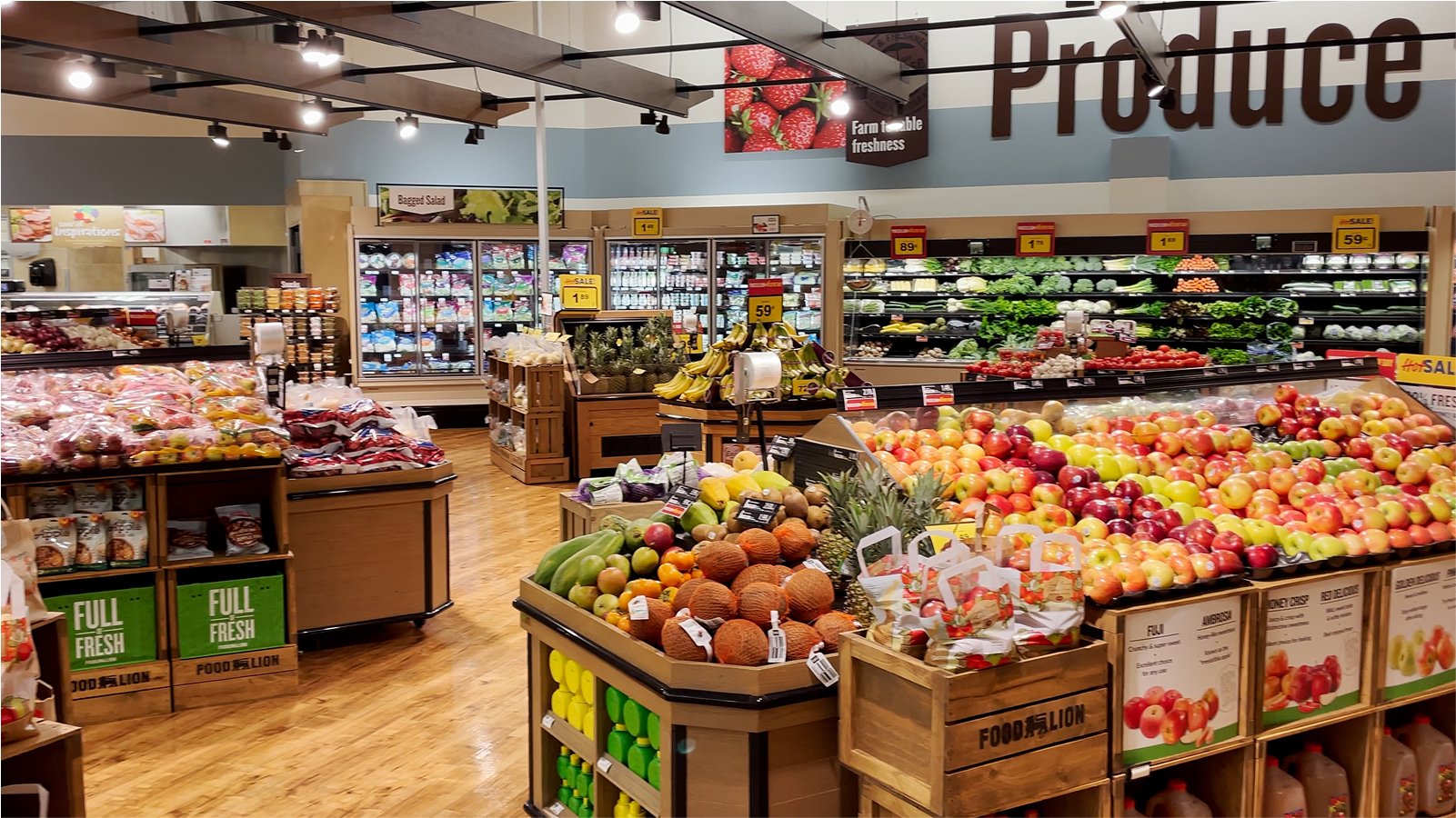
Grocery retailers face mounting pressure to do more with less. Rising labor costs, tighter margins and increasing shopper expectations for cleanliness are driving operational complexity across every part of the store — including the restrooms.
While much attention focuses on inventory and merchandising, restroom operations quietly shape shopper perceptions and loyalty. Yet traditional fixed cleaning schedules often drain labor resources without consistently delivering the clean, well-stocked facilities shoppers expect.
Smart restroom technology gives grocery retailers a more efficient way forward — helping optimize labor, minimize waste, reduce complaints and create a consistently positive in-store experience. It's not just smarter restroom management — it's smarter operations, aisle to aisle.
Retail customers notice your work
Restroom maintenance plays a critical role in shaping shopper perceptions. In fact, 83% of consumers say the condition of a restroom reflects how much a company values its customers and employees.
Even more telling, 74% believe that if a restroom isn’t clean, the rest of the store likely isn’t either.1
Shoppers often assess a store’s hygiene based on visible cues like employees actively cleaning, proper trash disposal, odor control and disinfecting surfaces. Meeting these expectations consistently requires adequate staffing and thoughtful operational strategies.
As shopper expectations rise, traditional maintenance approaches are increasingly falling short — highlighting the need for smarter, more dynamic restroom management.
Rethinking retail restroom maintenance
Balancing shopper expectations for clean, well-stocked restrooms with the realities of tighter budgets and staffing shortages is a constant challenge for store operations teams.
Traditional maintenance approaches often force an unsustainable tradeoff: either absorb higher labor costs or risk frustrating shoppers. Forward-thinking grocery retailers are breaking that cycle by adopting smarter, technology-enabled restroom management strategies that drive both efficiency and better shopper experiences.

Moving from reactive to proactive
Conventional restroom maintenance often operates in a reactive loop: clean, refill, wait for complaints, respond and repeat. This cycle leads to inefficient labor use and inconsistent shopper experiences.
Smart restroom IoT solutions break that pattern. By combining real-time sensor data, analytics and automated alerts, store operations teams can shift from static cleaning schedules to dynamic, needs-based servicing — significantly improving efficiency and cost control.
The operational benefits are far-reaching:
- Continuous operational improvement: Refine labor models and service routines based on historical traffic patterns. Instantly monitor restroom conditions and usage trends.
- Predictive servicing: Plan cleanings around anticipated peak times to stay ahead of shopper demand.
- Optimized labor allocation: Direct staff precisely where they’re needed most, minimizing wasted labor hours.
- Waste reduction: Help prevent premature replacement of paper products and soap.
- Service validation: Streamline tracking of service completion and compliance documentation.
- Continuous operational improvement: Refine labor models and service routines based on historical traffic patterns.

The optimal solution: a single integrated ecosystem
Managing restroom operations efficiently across high-traffic grocery stores requires more than a handful of smart devices. Without an integrated approach, retailers risk creating inefficiencies, data silos and missed opportunities for improvement.
The clearest path to greater efficiency and smarter operations is a connected ecosystem — one that brings hardware, software and service together into a single, unified platform.
Smart restroom solutions like Onvation® are designed specifically for high-traffic environments, including large-format grocery retailers. Through a centralized, easy-to-use interface, store operations teams gain real-time visibility into restroom traffic, supply levels and servicing needs across all locations.
With this connected view, retailers can optimize labor deployment, minimize material waste and deliver a cleaner, more consistent shopper experience — all while protecting operating margins.

Onvation tracks restroom usage in real time
Gaining real-time visibility into restroom conditions is essential for maintaining service standards while optimizing labor and supply usage — especially in grocery environments with high foot traffic.
Onvation continuously monitors key restroom indicators, including:
- Visitor traffic and occupancy trends
- Consumable supply levels (paper towels, toilet paper and soap)
- Fixture status and maintenance alerts
Powered by wireless, battery-operated SmartFit™ sensors, Onvation delivers reliable data around the clock — with easy installation designed to minimize disruption to daily store operations.
Onvation helps you save on every refill
The cloud-based platform tracks product usage in real time, predicting when dispensers will need refilling and alerting staff at the optimal moment — not too early, and never too late.
This proactive approach supports cost savings by:
- Reducing costs associated with empty dispenser complaints
- Minimizing waste caused by premature product restocking
- Maximizing labor efficiency by directing staff precisely where they’re needed
Onvation helps optimize labor scheduling
Predicting restroom traffic patterns is key to optimizing labor in high-traffic grocery environments. Onvation helps store operations teams anticipate peak usage times, allowing them to schedule staff more efficiently and allocate resources where they’ll have the greatest impact.
Smarter scheduling not only improves service coverage — it also helps reduce the strain of understaffed shifts, supporting employee satisfaction and lowering the risk of turnover.
Onvation helps prevent costly service disruptions
Even minor restroom issues can quickly impact the shopper experience if left unaddressed. Onvation helps retailers stay ahead by detecting dispenser malfunctions or low-battery alerts early — before they escalate into bigger service problems.
With proactive maintenance alerts, store teams can minimize downtime, avoid unnecessary repair costs and reduce the risk of costly shopper complaints.

Onvation supports teams with on-the-go tools
Empowering cleaning teams with real-time tools is key to maintaining consistent service across busy grocery environments. Onvation delivers immediate service alerts through its easy-to-use Compass® app, helping teams respond faster and work more efficiently.
The app also enables team members to log service completions directly into the Onvation dashboard, supporting better tracking and compliance. When refill alerts are triggered, employees can access quick instructional videos — helping new team members get up to speed faster with minimal training downtime.
Real-world results: smarter restroom management in action
To demonstrate the real-world impact of smart restroom technology, Kimberly-Clark Professional analyzed four months of restroom data across 10 Onvation customers — spanning a variety of high-traffic facilities and industries.
While these locations varied, the operational pressures they faced — continuous traffic, high hygiene expectations and labor constraints — reflect the daily realities of large grocery retailers.
Across key operational areas, Onvation customers achieved measurable improvements:
Reduced supply waste
Before Onvation, these facilities spent an average of $43,592 annually on towels, soap and tissue, with $20,488 wasted due to premature refills. After implementation, early refills were reduced, lowering the annual spend to $30,950.
Lowered labor costs
Prior to Onvation, these facilities were spending $93,041 for two cleaners to perform three top-to-bottom cleaning rounds, checking each dispenser on each visit.2 With Onvation, they eliminated one cleaning round per day, reducing labor costs to $62,028.
Decreased complaint responses
These facilities received an average of four restroom-related complaints per day before Onvation. With 261 working days and an estimated cost of $31 for each complaint, that adds up to $32,364 per year.3 After deployment, restroom complaints were reduced by up to 75%, lowering the annual cost to $8,091.
Putting all these savings together, these facilities realized average savings of $68,052 per year — freeing teams to reinvest time in deeper cleaning tasks that might not have been done otherwise to enhance the shopper experience and reinforce brand trust.










